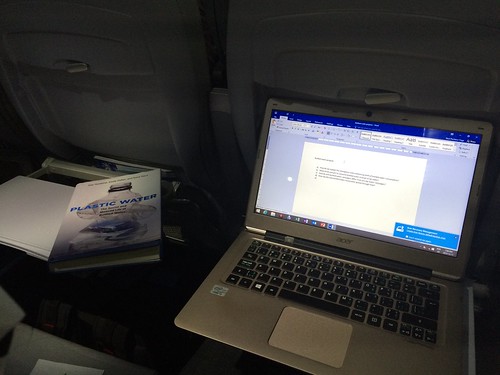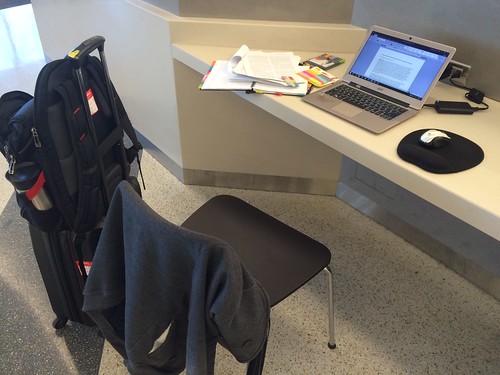One of the challenges we (professors, and I believe, graduate students, contingent faculty, and a broad range of other academics and adjacent-to-academia folks) face is that we increasingly feel that we don’t have enough time and that we are too busy, and sometimes we feel too overwhelmed by everything we have to do: supervise theses, write papers, travel for fieldwork and conferences, do service to the university, the department and the community. I’ve been feeling this way the past few weeks, despite my relatively decent organizational and time management skills.
A couple of weeks ago, I literally did not even have lunch, I worked all day, having started at 4 am. I participated in a workshop on public policy theories, met with graduate students at CIDE, met with undergraduate students from IBERO, had FaceTime meetings with coauthors, etc. This past week, I was the local host for an international conference and worked 17 hour days (though I did eat). So, when I finally have had some time to think over what projects I wanted to tackle, I KNEW had to go back to using some sort of Hierarchy of Priorities method.
If you’ve read the literature on decision analysis, Analytic Hierarchy Process (AHP) is a method designed to help make complex decisions. It’s used in a very broad range of scholarship. I am not nearly as systematic as to use AHP to decide which writing I need to do next, so my hierarchy of priorities is much less sophisticated. This is, more or less, the hierarchy I follow when tackling a writing project:
1. Coauthored papers that are at a Revise-&-Resubmit (R&R) stage.
These papers are usually at the highest rung of my priority ladder. The logic underneath this decision is quite straightforward: R&Rs usually mean that there’s a likelihood that we’ll get the paper published. A fast R&R turnaround can help us get the paper out and published faster. Plus, having a coauthor means that we both need to consider tenure clocks, etc. So when I am coauthoring a paper, I usually focus my efforts on these one.
2. Coauthored papers that have an impending deadline.
These papers are usually either second, or tied-to-the-top of the priority hierarchy. Since we have to get revisions in, I usually focus my time on getting these out relatively fast. For example, a coauthor of mine and I have to resubmit an R&R in the next couple of weeks to avoid having our paper considered as a new submission rather than a revise-and-resubmit. Therefore, this paper takes precedence over others.
3. Single-authored papers that are currently under R&R.
These manuscripts need to get worked on relatively fast as well, because they’re important for my tenure clock. So I currently have 5 R&Rs and they’re occupying A LOT of my time. That’s why I never feel like I don’t have anything to write. I have 5 R&Rs, one per day of the week if I decide to work WOPED model (my post on WOPED vs MEPFED is here).
4. Memorandums, synthetic notes, Conceptual Synthesis Excel dump row entries.
Since manuscripts are made out of words and data, I usually focus on spending at least some time (1 hour if possible, if not more) writing “input material” (i.e. drafts of memorandums, handwritten notes on a specific project, transcriptions of interviews, composite versions of datasets, etc.)
Note how my entire thread can be copied-and-pasted as entire argument/idea. This is one key reason why I don't feel I waste time on Twitter pic.twitter.com/Xb7uknifuV
— Dr Raul Pacheco-Vega (@raulpacheco) November 4, 2017
Obviously, emails related to scholarly activities, and other types of writing are also important and should be valued, particularly when it comes to moving your research forward. But those are usually positioned in the lower rung of my writing priorities. Still need to be considered, but they are not at the top of my priority hierarchy. I’m also quite open to other suggestions on how to prioritize writing projects.





0 Responses
Stay in touch with the conversation, subscribe to the RSS feed for comments on this post.